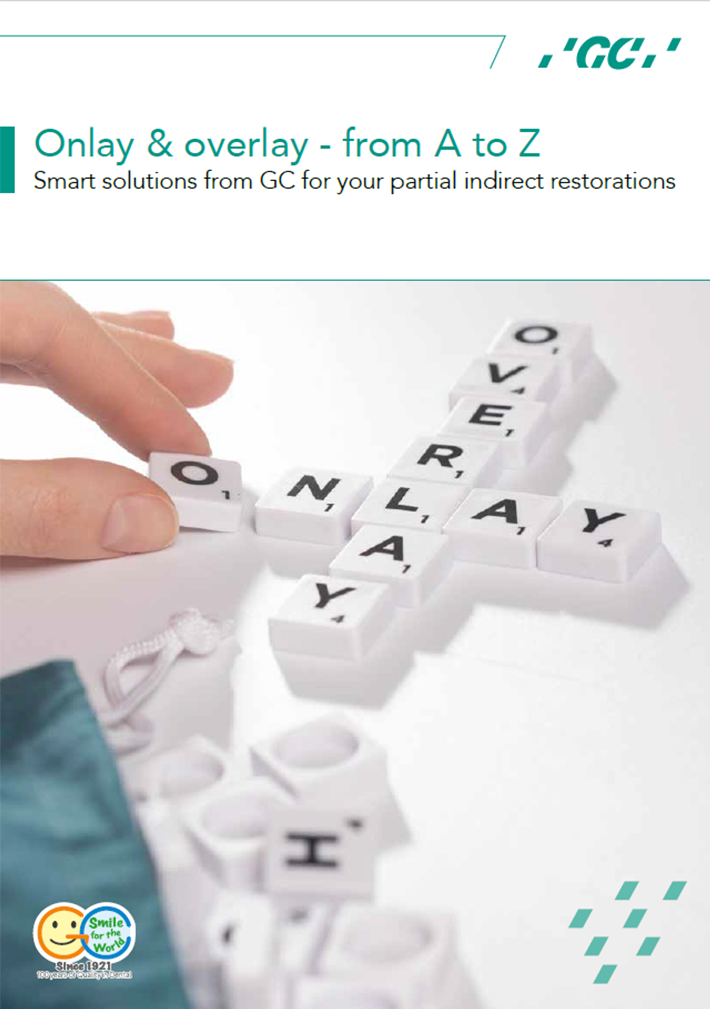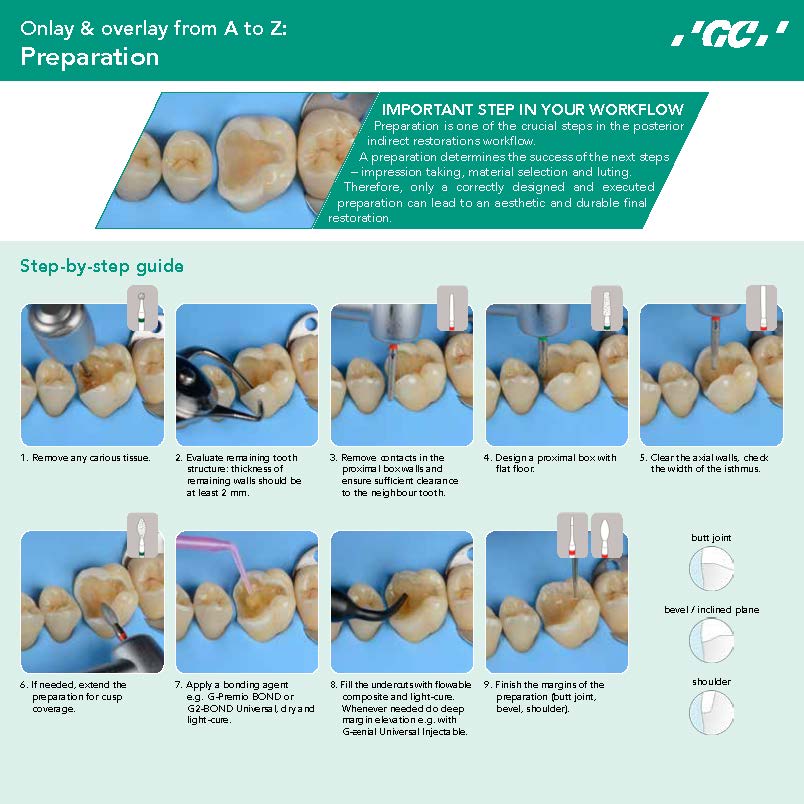
Let GC guide you for the restoration of indirect partial restoration with our smart solutions and tips & tricks!
1. Preparation
is a crucial step in your indirect partial posterior restoration workflow as it sets the foundation for a successful restoration. Incorporating our expert backed preparation guidelines, build-up and deep margin elevation when needed will ensure a minimally invasive procedure and aesthetic and durable final result.
Step-by-step
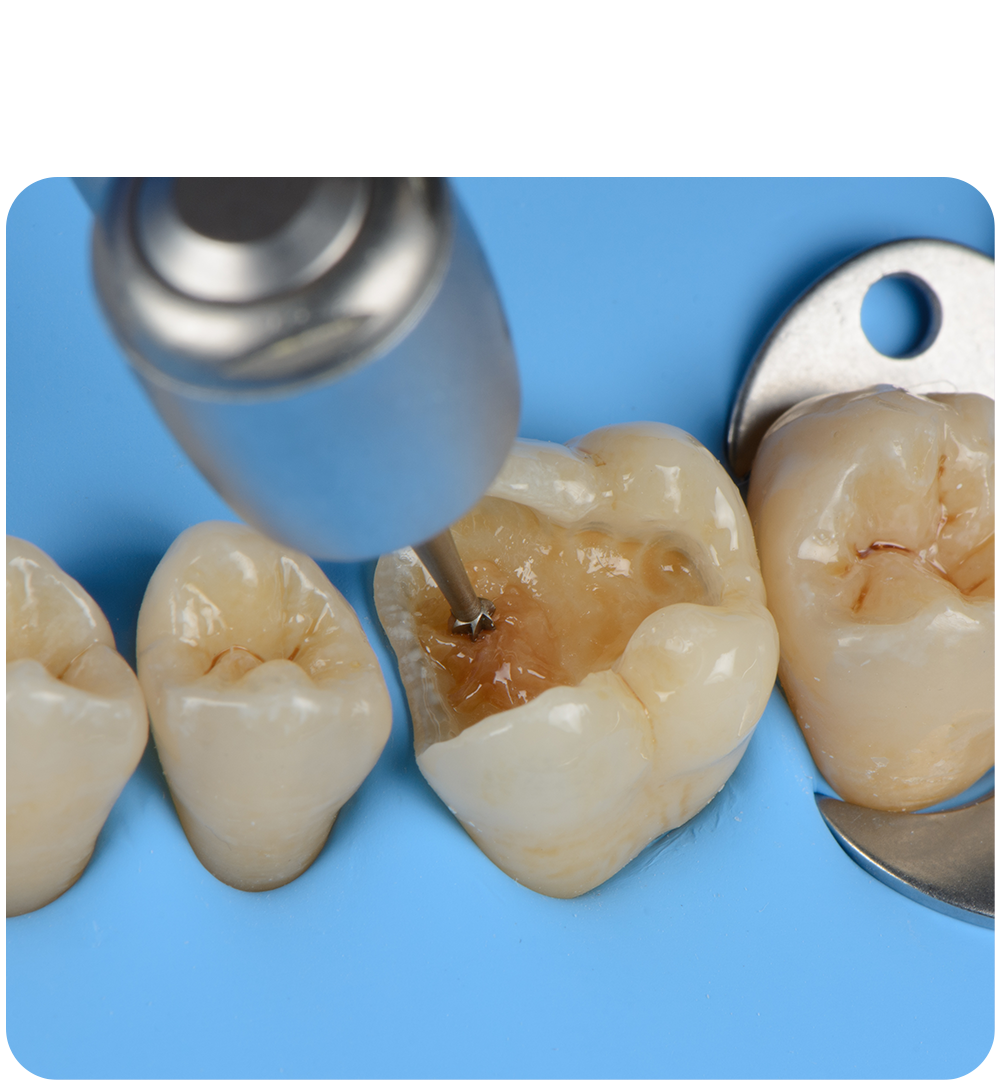
1. Remove any carious tissue.
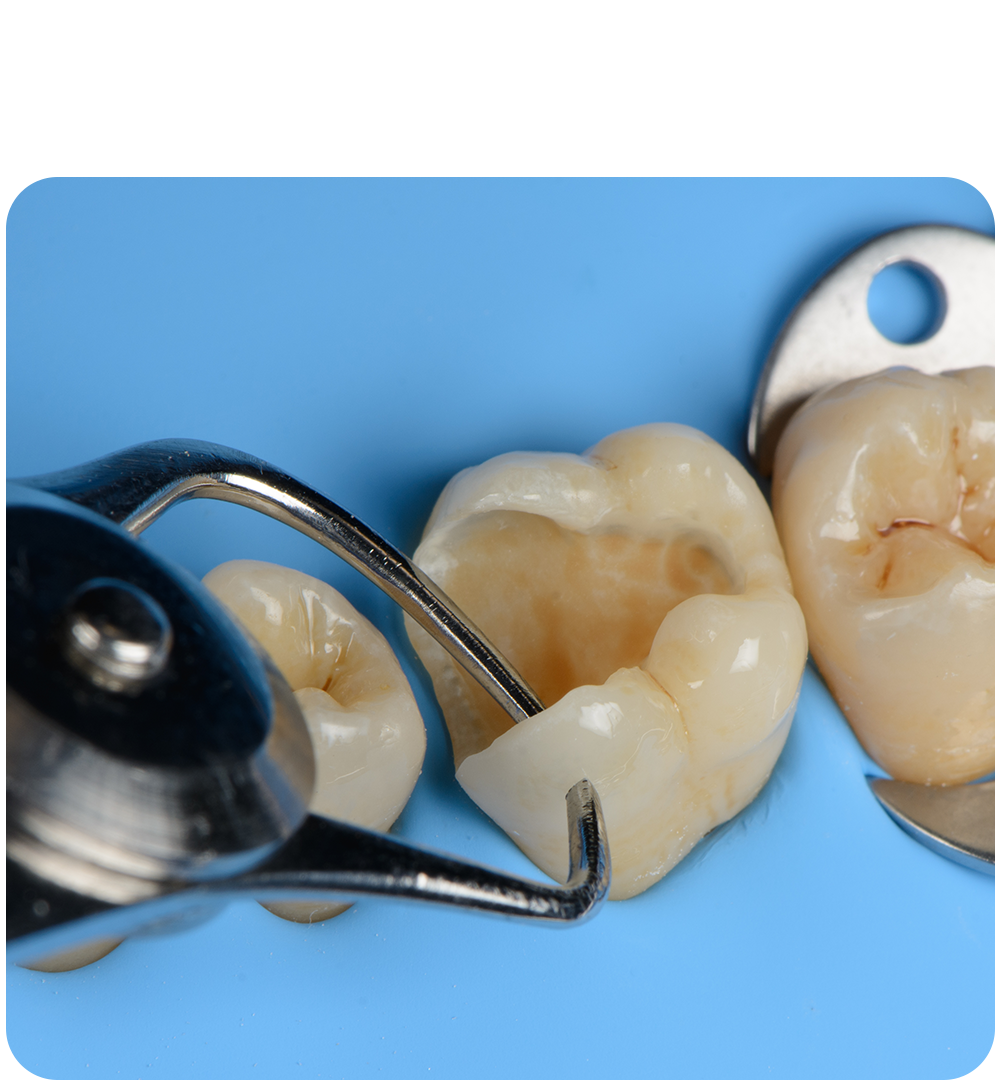
2. Evaluate remaining tooth structure: thickness of remaining walls should be at least 2mm.

3. Remove contacts in the proximal box walls and ensure sufficient clearance to the neighbor tooth.
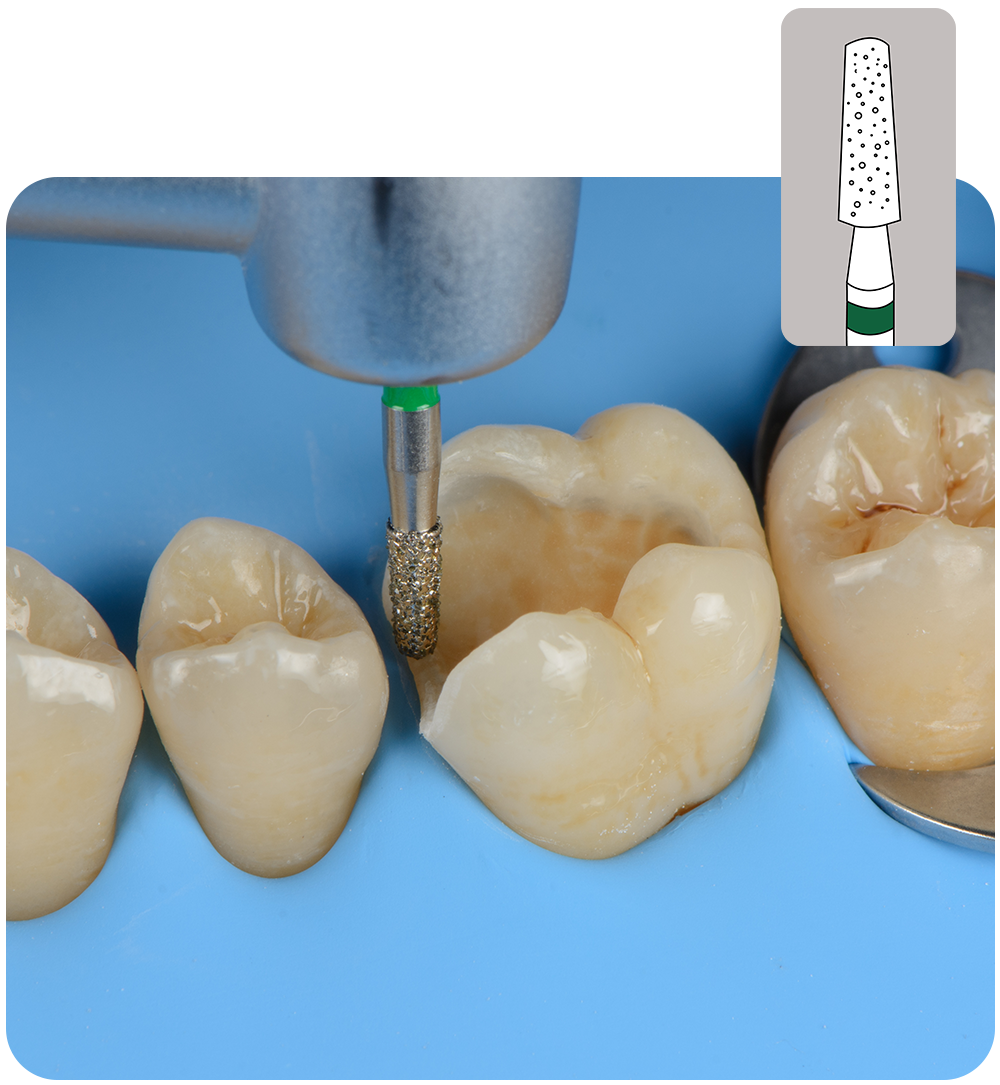
4. Design a proximal box with flat floor.
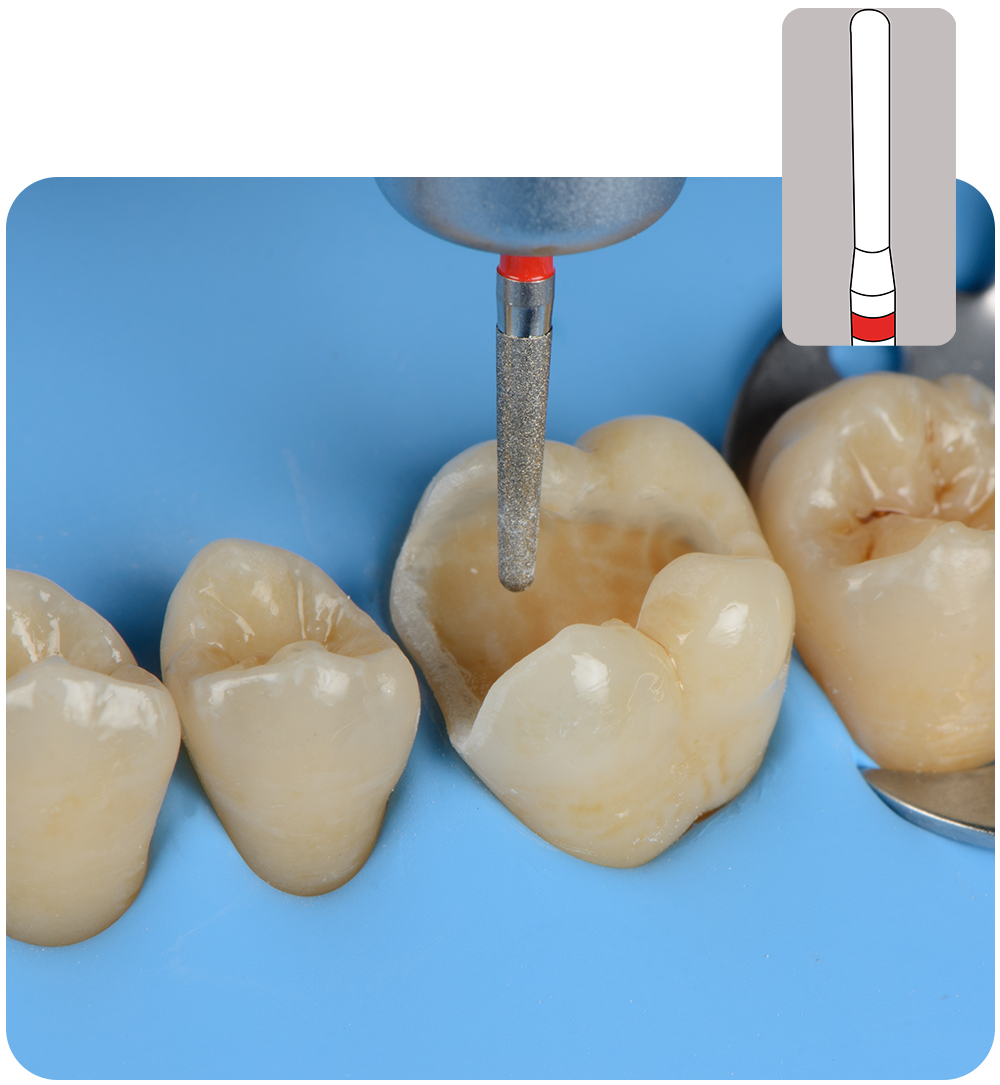
5. Clear the axial walls, check the width of the isthmus.
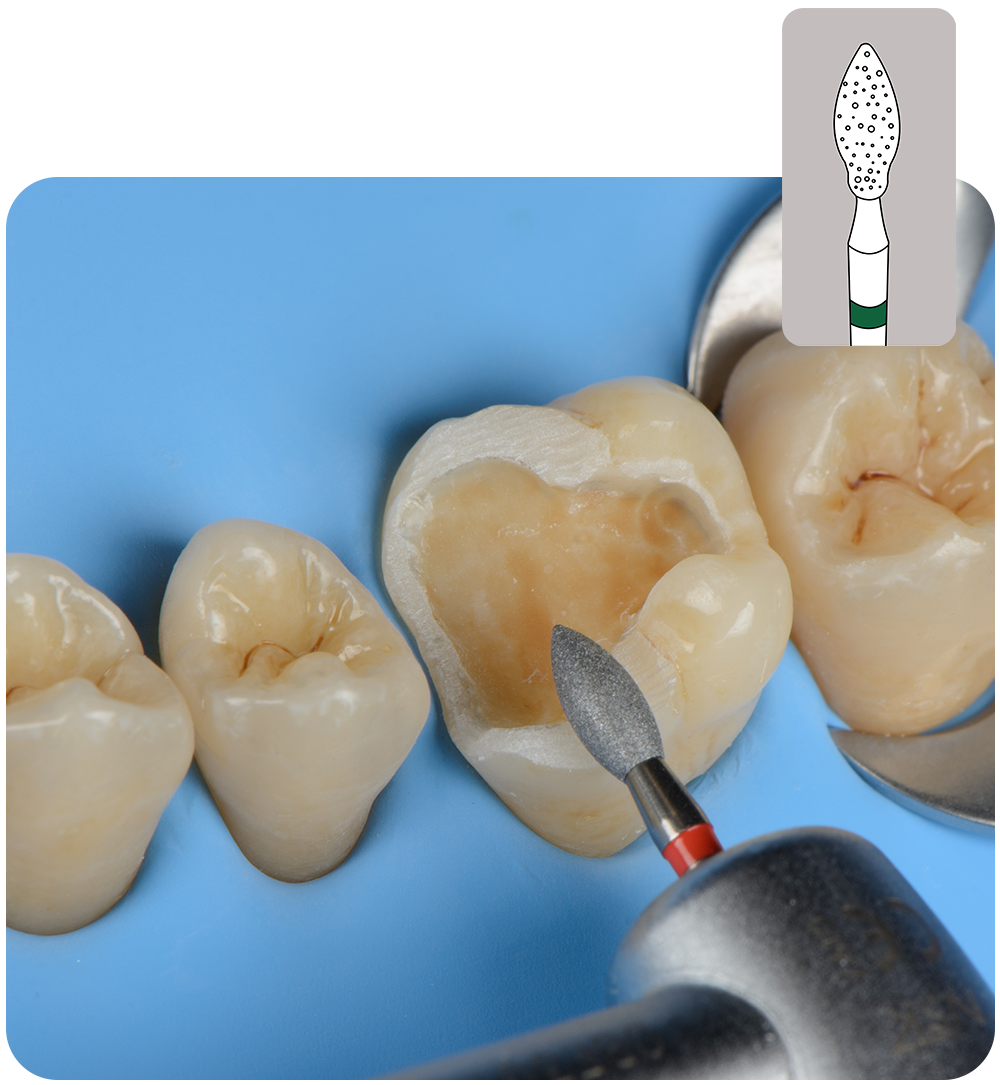
6. If needed extend the preparation for cusp coverage.

7. Apply a bonding agent e.g. G-Premio BOND or G2-BOND Universal, dry and light-cure.
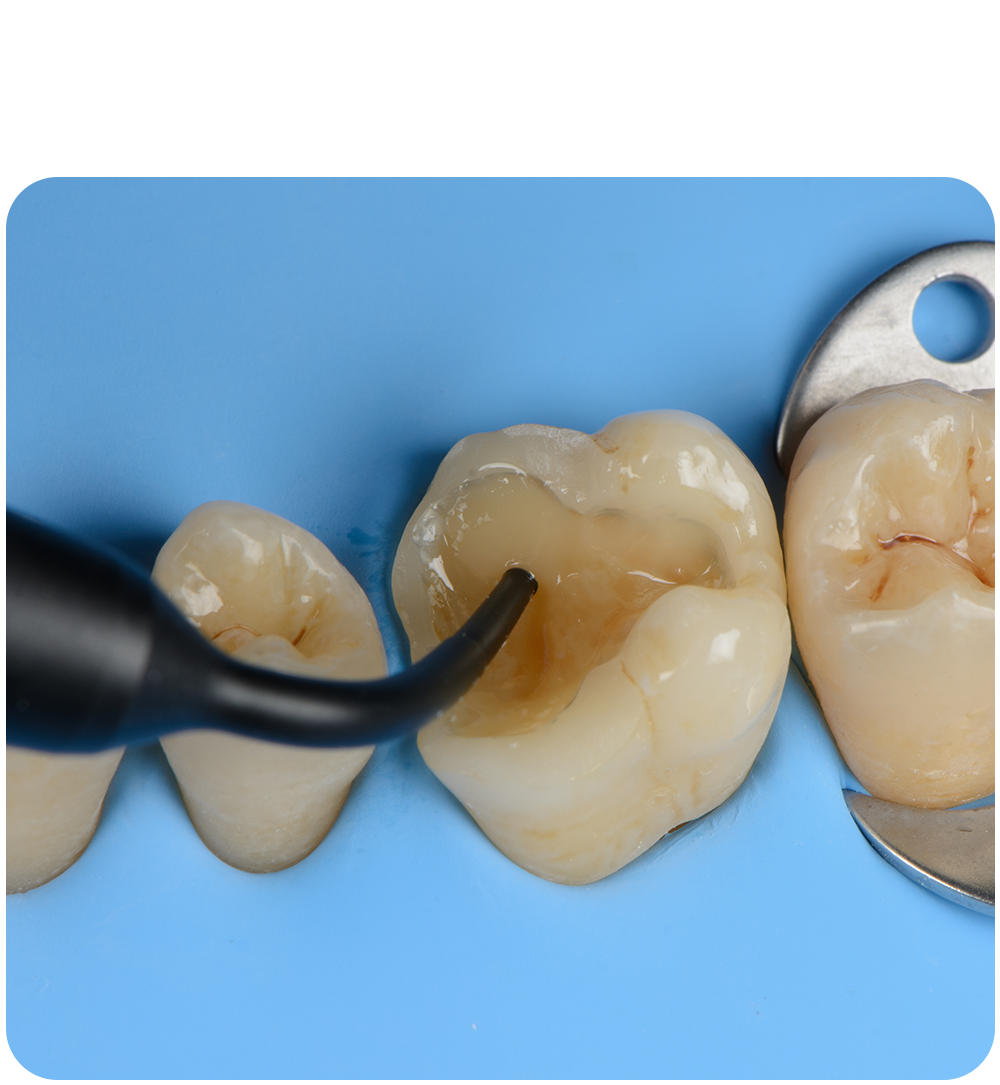
8. Fill the undercuts with flowable composite and light cure. Whenever needed do deep margin elevation e.g. with G-aenial Universal Injectable.
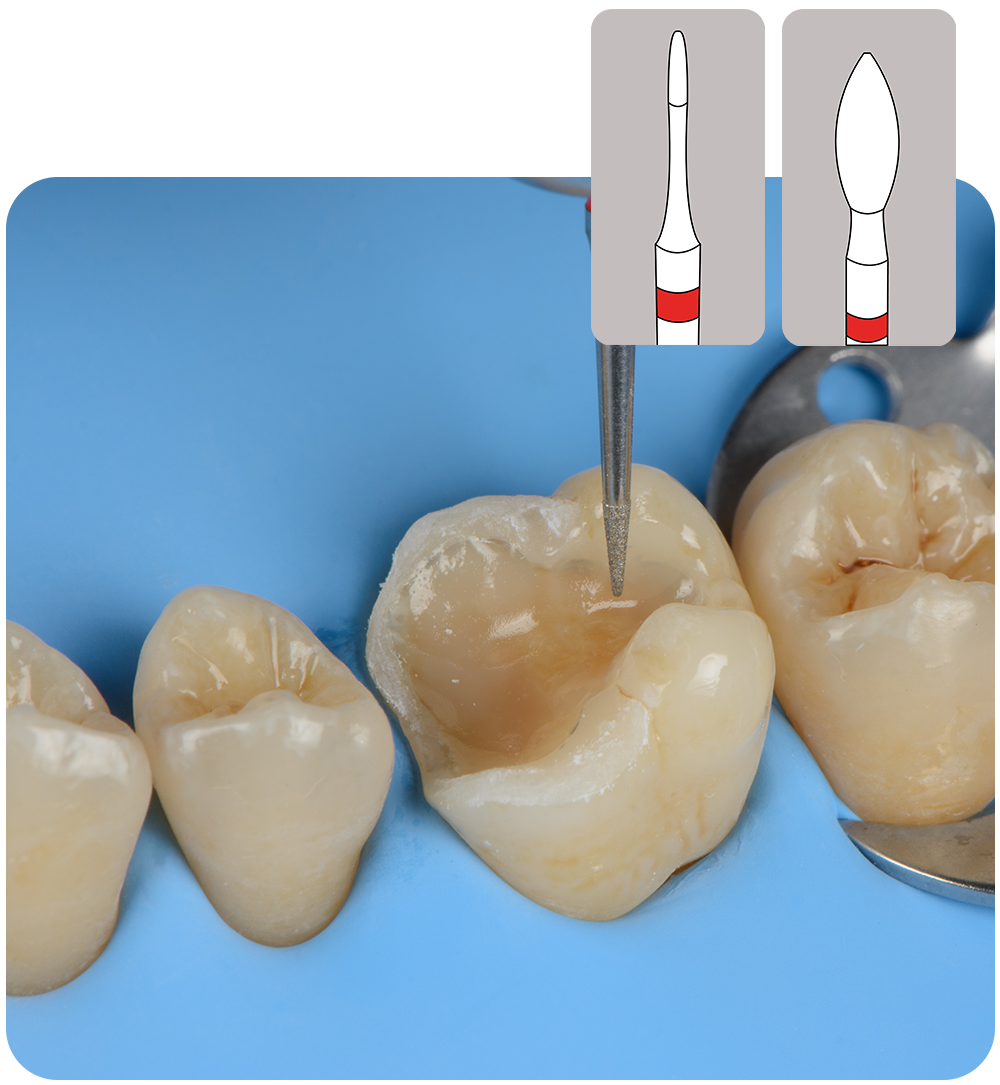
9. Finish the margins of the preparation (butt joint, bevel for onlays, shoulder for overlays).
Tips & tricks for a flawless preparation
- Immediate dentine sealing with G2-BOND Universal or G-Premio BOND will protect the dentine from contamination, eliminate postoperative sensitivity and increase bond strength
- Fill the undercuts with everX Flow to preserve and reinforce the remaining tooth structure
- Do a deep margin elevation with G-ænial Universal Injectable when needed
- Quickly and efficiently temporize the preparation with Tempsmart DC or Revotek LC
- Use magnification to ensure well-defined and continuous margins
- In endodontically treated teeth without marginal ridge (MOD cavity) cusp coverage is mandatory to avoid fractures
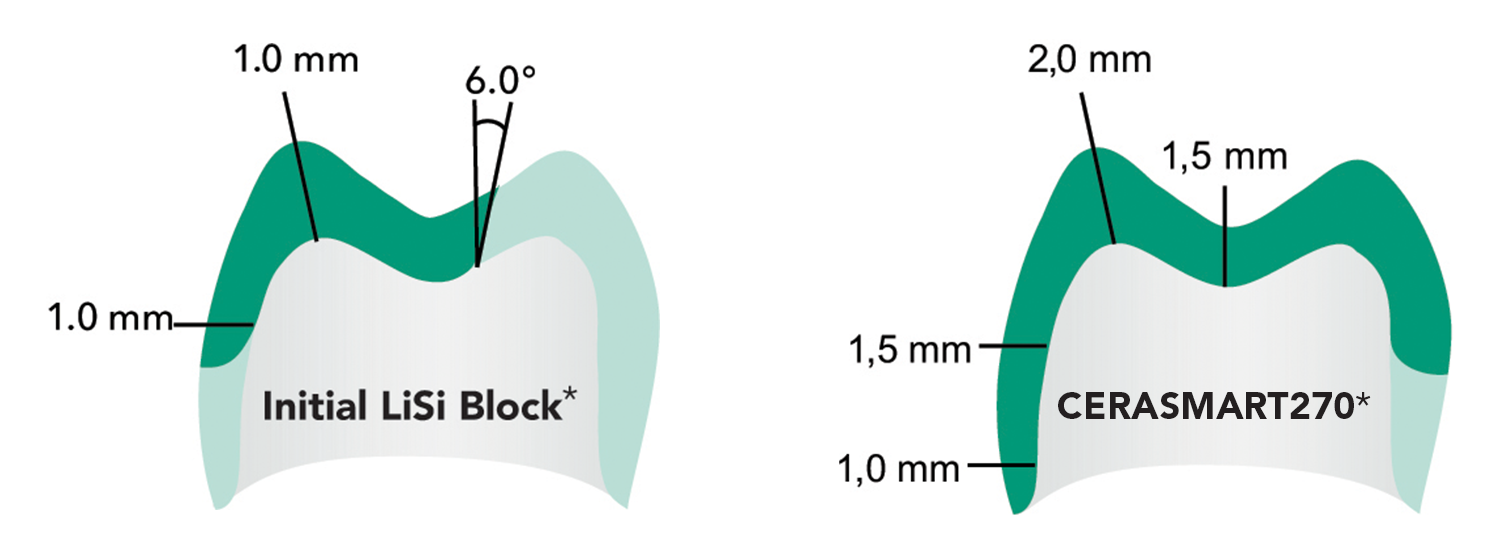
IMMEDIATE DENTIN SEALING
Immediate dentin sealing means infiltration of the bonding agent into the freshly cut dentin immediately after preparing the tooth for an indirect restoration. It seals dentinal tubules and prevents bacterial contamination, reduces post-operative sensitivity and enhances the bond strength of the final restoration.
DEEP MARGIN ELEVATION
Deep margin elevation involves repositioning of a subgingival margin of the preparation to a slightly-supragingival position. It is usually done when subgingivally positioned margin of the preparation prevents adequate isolation, visibility and impression taking. Elevated margin will allow for easier isolation, precise impression taking and improved visibility and therefore a cleaner and simpler procedure.


Videos
Downloads
FAQ

PREPARATION
What are the correct dimensions of a preparation for an onlay and overlay?
There are some guidelines regarding the preparation dimensions for onlay or overlay that a dentist should follow for an optimal final result. First, the axial walls should have a divergence angle of 15 degrees. The internal angles should be rounded. The proximal step width should be at least 1 mm and the width of the occlusal isthmus should be at least 2mm. Sufficient clearance between the proximal step edge and the adjacent tooth should be ensured – at least 0,5mm. Furthermore, the dimensional demands of the restorative material should be respected. Both Initial LiSi Block and CERASMART270 are designed to push the boundaries of minimal thickness of the restoration. For initial LiSi Block restorations the recommended minimal thickness for an onlay or overlay is 1 mm throughout the entire restoration. For CERASMART270 restorations the recommended minimal thickness is at least 1,5mm occlusally and in the equator area and 1mm at the proximal step. These recommendations should be taken into account when preparing a tooth to provide sufficient space for the chosen material.
What should I do when caries or defect extends subgingivally in the tooth that I want to restore?
When the proximal margin of the preparation is subgingivally, the clinician might stumble upon some difficulties – it is difficult to take an exact analog or digital impression, it is difficult to place a rubber dam, the visibility is compromised and therefore the successful sealing of the margins is questionable. In cases where it is possible deep margin elevation is recommended. By performing this procedure, the proximal margin will be elevated slightly supragingivally and therefore impression taking, isolation and visibility will be improved.
What is the best material for blocking the undercuts when preparing a tooth for onlay or overlay?
In order to ensure longevity of the tooth a short-fiber reinforced flowable composite ever X Flow is an ideal choice. Thanks to the short fibers everX Flow is efficiently replaces the missing dentin and reinforces the tooth. Not only will it provide exceptionally high fracture toughness but will also allow for easy manipulation and placement due to its thixotropic viscosity.
IMMEDIATE DENTIN SEALING
Why should I do immediate dentin sealing?
Immediate dentin sealing (IDS) is a dental technique of applying a bonding agent to the freshly cut dentin surface of a tooth immediately after preparing it. The bonding agent seals the exposed dentinal tubules, preventing fluid exchange between the tooth and the oral environment.
IDS has been shown to have several benefits, including reducing postoperative sensitivity, preserving the pulp vitality, improving the bond strength of the final restoration, and improving the longevity of restorations.
How do I expose the enamel surface after immediate dentin sealing?
Enamel surface can be exposed after immediate dentin sealing by carefully using a fine grit diamond bur.
DEEP MARGIN ELEVATION
What matrix should I use for deep margin elevation?
When performing DME, it is important to use a matrix band that can adapt closely to the tooth surface and create a tight seal around the preparation margin. There are several matrix systems available, and the choice of matrix band will depend on the specific needs of the case.
Commonly used matrix systems for DME are sectional matrix system or circumferential matrix system. In cases where it is difficult to achieve a perfect seal there are some additional recommendations. One example is the use of matrix in matrix technique, where usually a sectional matrix is placed inside of a circumferential matrix. Another useful tip is to pack Teflon tape into the are between the matrix and the adjacent tooth to achieve a tight seal.
How do I adequately isolate the tooth?
Placement of the rubber dam is always recommended. It is better to isolate the whole working quadrant or at least the two adjacent teeth to the tooth being restored. To achieve a perfect isolation dental floss and teflon tape can be used. To ensure the stability of the clamp, it is important that the clamp is in contact with the tooth in 4 contact points.
Additionally, the correct size of the perforation of the rubber dam is essential to prevent leakage. Make sure to choose the appropriate size on the perforating tool. Once the rubber dam is in position, inverting it at the gingival margins of isolated teeth is another beneficial step for tighter seal and improved visibility.
What if I can’t isolate the tooth?
In some cases, the margin of the defect is so subgingival that adequate isolation is impossible. In this case deep margin elevation is not recommended as the lack of the isolation could lead to compromised bonding of the composite material. Therefore, other options like surgical gingivectomy or crown lengthening procedures should be considered.
Related products
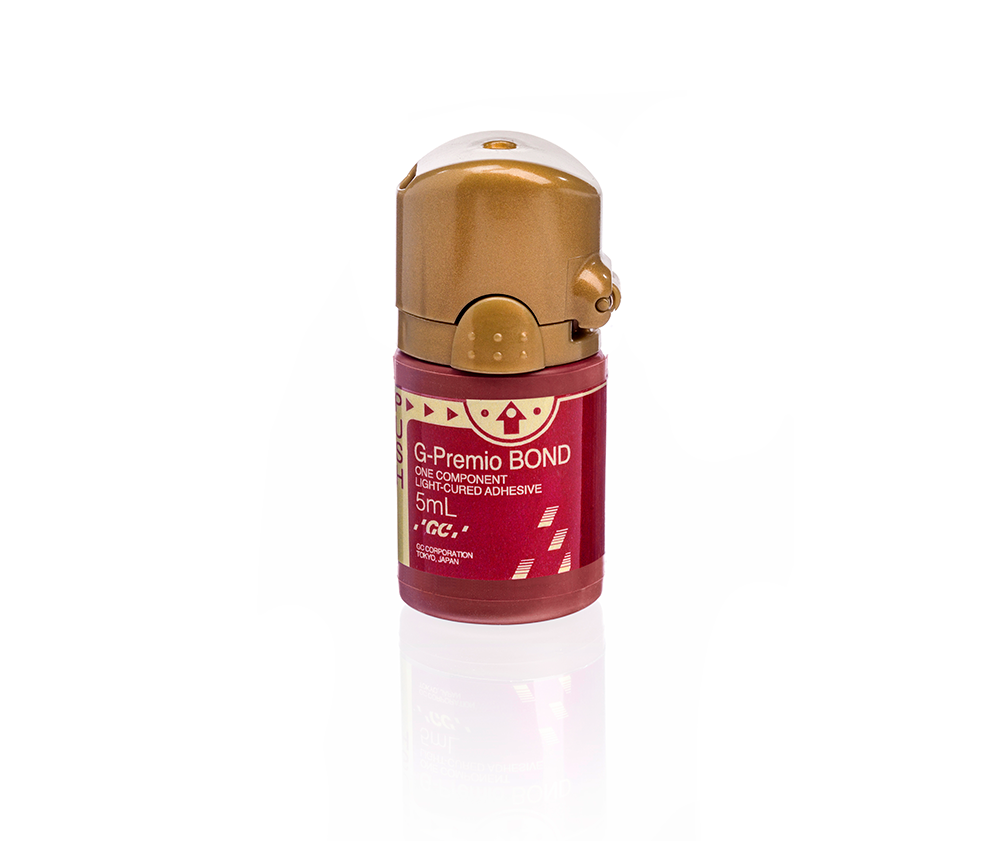
G-Premio BOND
One-component light-cured universal adhesive
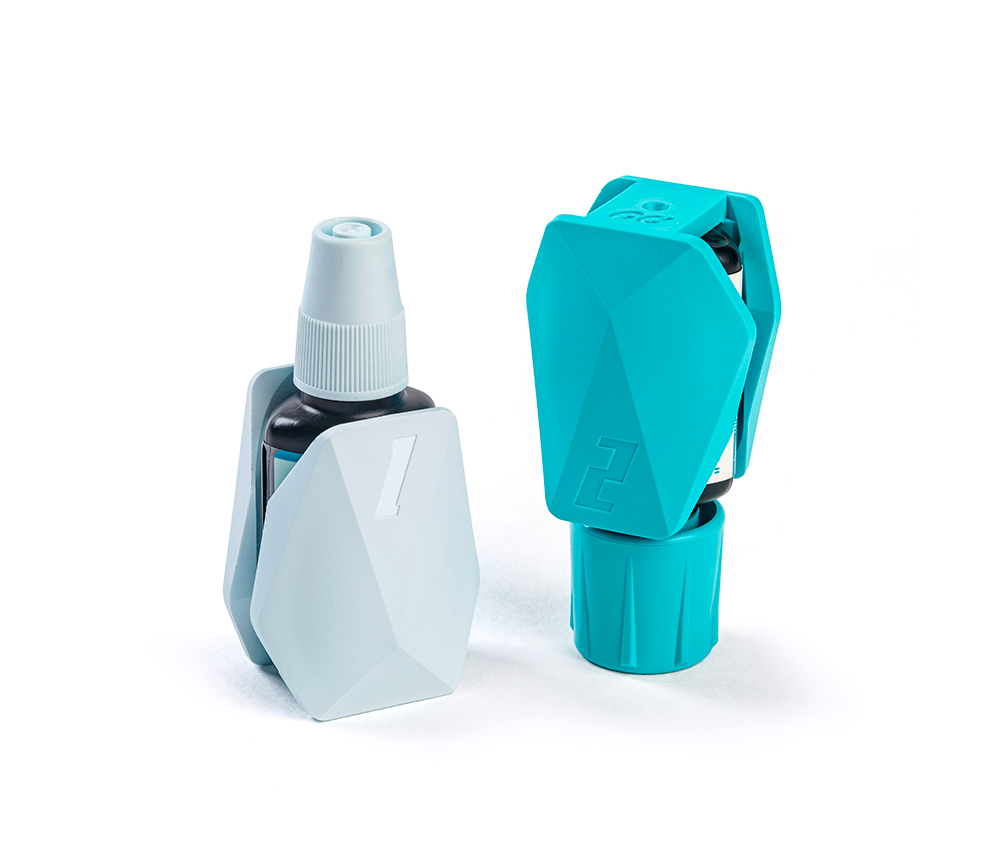
G2-BOND Universal
Two-bottle light-cured universal adhesive
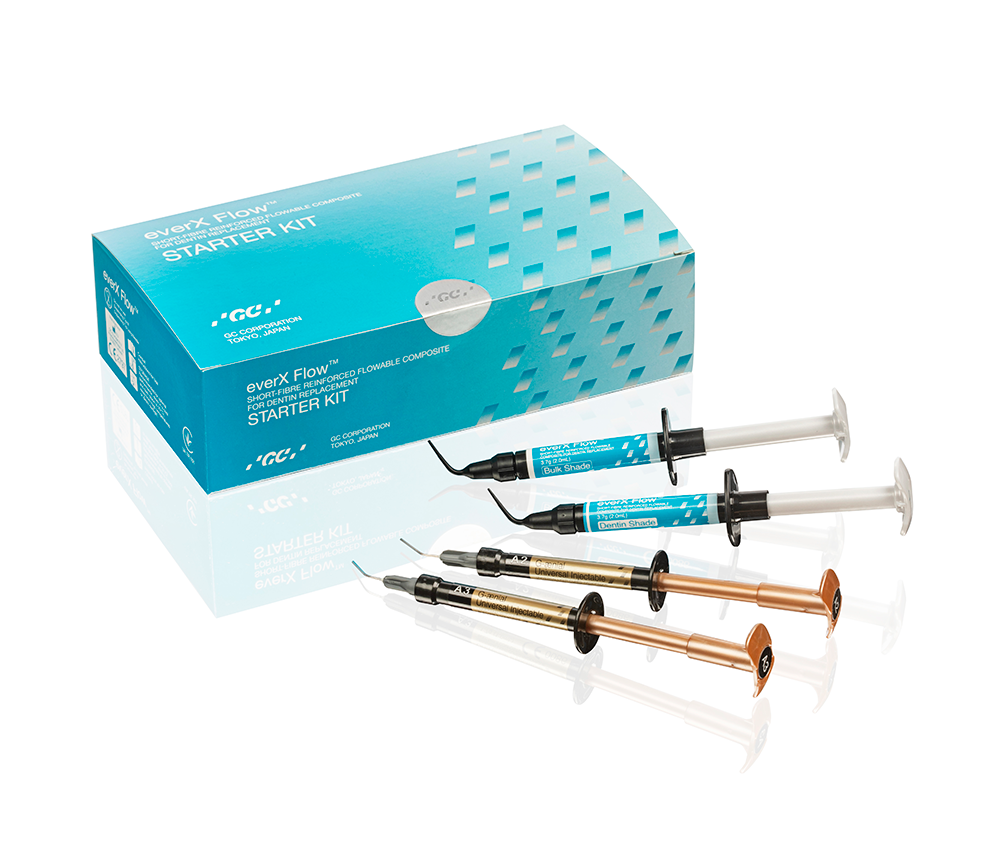
everX Flow
Short-fibre reinforced flowable composite for dentine replacement
G-ænial Universal Injectable
High-strength restorative composite








